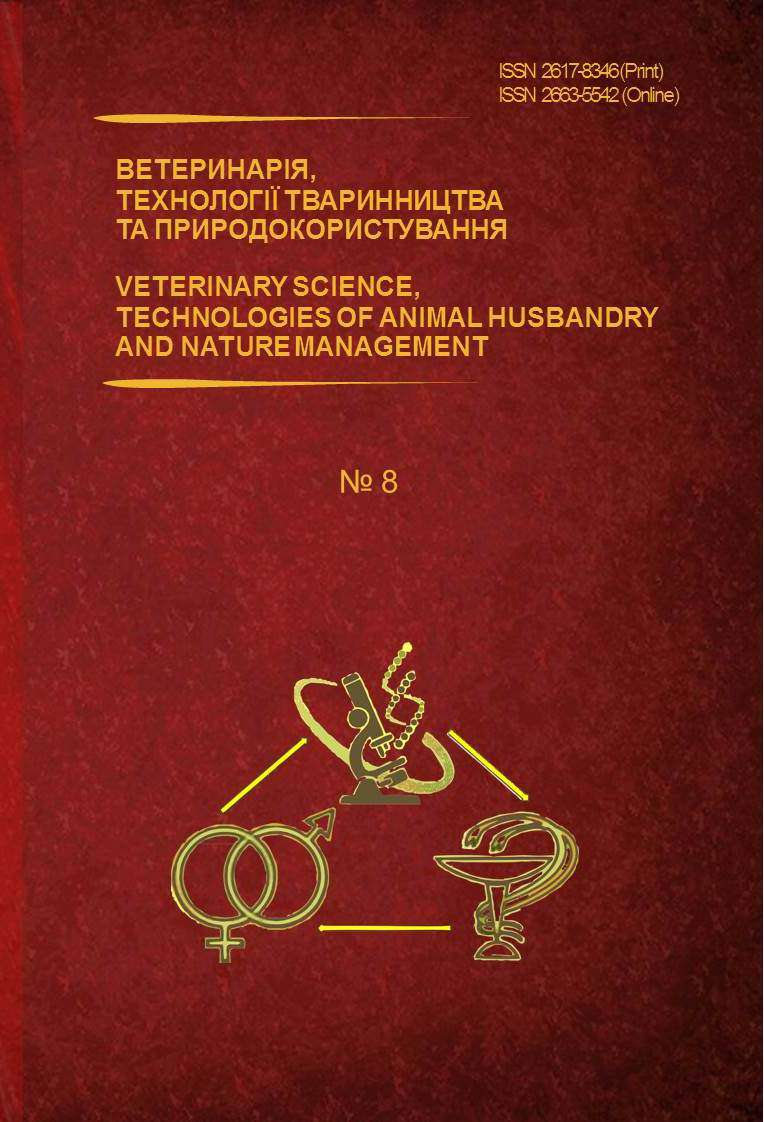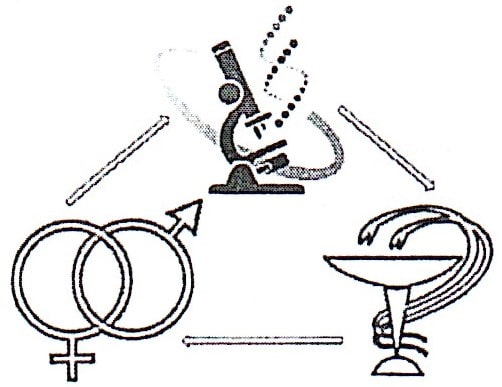Діагностична значимість вимірювання «кутикулярного індексу» у собак за патології печінки та нирок
Анотація
Встановлено, що за різних варіантів нефропатії та за розвитку печінково-ниркового та нирково-печінкового синдромів у собак в печінці та нирках відбуваються структурні зміни, яким відповідають порушення метаболічних процесів, що визначені за результатами клініко-мікроскопічних та біохімічних досліджень крові, а також щодо змін площі зовнішньої поверхні клітин волосяної кутикули, якій ми дали визначення «кутикулярний індекс». Методику визначення «кутикулярного індексу» можна використовувати у диференціальній діагностиці різних варіантів патології нирок і печінки у комплексі з клінічними, інструментальними і лабораторними дослідженнями, а також за диспансерного обстеження тварин даного виду. У статті наведені приклади різних варіантів патології з визначенням «кутикулярного індексу».
Завантаження
Посилання
Almendros, A., Sandy, J. R., & Kirberger, R. M. (2019). Hepatocutaneous syndrome in a Maltese, diagnosis, treatment and the value of CT in the diagnosis, Vet Record, 7, (4), e000918. https://doi.org/10.1136/vetreccr-2019-000918.
Cadar, M. (2015). SEM study of hair cuticle in some Canidae breeds. Bulletin of University of Agricultural Sciences and Veterinary Medicine Cluj-Napoca. Animal Science and Biotechnologies, 72, 127-130. https://doi.org/10.15835/BUASVMCN-ASB%3A11568.
Cadar, M., Miresan, V., & Vatca, A. (2014). Cyto-Morphological Particularities of Hair Cuticle in Domestic and Wild Suidae. Bulletin of University of Agricultural Sciences and Veterinary Medicine Cluj-Napoca. Animal Science and Biotechnologies, 71 (2), 277-278. http://dx.doi.org/10.15835/buasvmcn-asb:10485.
Corradini, S., Accorsi, P. A., Boari, A., Beghelli, V., Mattioli, M., Famigli-Bergamini, P., & Fracassi, F. (2013). Evaluation of hair cortisol in the diagnosis of hypercortisolism in dogs. J Vet Intern Med, 27 (5), 1268-1272. https://doi.org/10.1111/jvim.12135.
DeMarle, K. B., Webster, C., Penninck, D., & Ferrer, L. (2021). Approach to the Diagnosis of Hepatocutaneous Syndrome in Dogs: A Retrospective Study and Literature Review. Journal of the American Animal Hospital Association, 57(1), 15–25. https://doi.org/10.5326/JAAHA-MS-7072.
Gerdin, J. A., McDonough, S. P., Reisman, R., & Scarlett, J. (2016). Circumstances, Descriptive Characteristics, and Pathologic Findings in Dogs Suspected of Starving, Vet Pathol, 53 (5), 1087-1094. https://doi.org/10.1177/0300985815575049.
Holm, L. P., Hawkins, I., Robin, C., Newton, R. J., Jepson, R., Stanzani, G. … Walker, D. J. (2015). Cutaneous and renal glomerular vasculopathy as a cause of acute kidney injury in dogs in the UK. Vet Rec, 176 (15), 384. https://doi.org/10.1136/vr.102892.
Holm, L. P., Stevens, K. B., & Walker, D. J. (2010). Pathology and Epidemiology of Cutaneous and Renal Glomerular Vasculopathy in Dogs. J Comp Pathol, 176, 156-161. https://doi.org/10.1016/j.jcpa.2020.03.003.
Jepson, R. E., Cardwell, J. M., Cortellini, S., Holm, L., Stevens, K., & Walker, D. (2019). Cutaneous and Renal Glomerular Vasculopathy : What Do We Know so Far? Vet Clin North Am Small Anim Pract, 49(4), 745-762. https://doi.org/10.1016/j.cvsm.2019.02.010.
Koch, S. L., Tridico, S. R., Bernard, B. A., Shriver, M. D., & Jablonski, N. G. (2020). The biology of human hair: A multidisciplinary review. Am J Hum Biol,32 (2), 233. https://doi.org/10.1002/ajhb.23316.
Lloyd, D. H. (2007). Skin biopsies in veterinary dermatology. Companion Animal, 12(7), 68-71. https://doi.org/10.1111/j.2044-3862.2007.tb00204.x.
Maslak, Yu. V. (2014). Aspekty etiolohii anemii sobak. Problemy zooinzhenerii ta veterynarnoi medytsyny, 29 (2), 65-66. [In Ukrainian]
Ouschan, C., Kuchar, A., & Mostl, E. (2013). Measurement of cortisol in dog hair: a noninvasive tool for the diagnosis of hypercortisolism. Vet Dermatol, 24 (4), 428-431. https://doi.org/10.1111/vde.12043.
Plant, J. D. (2007). Recognizing excellence of scholarship in veterinary dermatology: The Hugo Schindelka Medal. Veterinary Dermatology, 18 (5), 285-286. http://dx.doi.org/10.1111/j.1365-3164.2007.00626.x.
Sato, H., Matsuda, H., Kubota, S., & Kawano, K. (2006). Statistical comparison of dog and cat guard hairs using numerical morphology. Forensic Sci Int, 158(2-3), https://doi.org/10.1016/j.forsciint.2005.04.041.
Schuldenfrei, M. D., & Pieper. J. B. (2020). Evaluation of hair follicle parameters using TrichoScale Pro© in healthy dogs: a pilot study. Vet Dermatol. 31 (3), 181. https://doi.org/10.1111/vde.12836.
Stevens, K. B., O'Neill, D., Jepson, R., Holm, L. P., Walker, D. J., & Cardwell, J. M. (2018). Signalment risk factors for cutaneous and renal glomerular vasculopathy (Alabama rot) in dogs in the UK, Vet Rec, 183(14), 448. https://doi.org/10.1136/vr.104891.
Tumilowicz, P., Goliszewska, A., Arct, J., Pytkowska, K., & Szczepanik, M. (2018) Preliminary study of guard hair morphology in four dog breeds. Vet Dermatol. Online ahead of print, 29(4), 332-e116. https://doi.org/10.1111/vde.12656.
Tymoshenko, O. P., Palii, A. P., Rodionova, K. O., Papieta, H. A., Snopenko, O. S., & Skrypova, K. V. (2020). Patent Ukrainy 142349. Kyiv : Derzhavne patentne vidomstvo Ukrainy. [In Ukrainian]
Vaishnav, L., Parashar, S., Kumar, A., & Sachdeva, M. P. (2021). A study on hair analysis of different Canidae breeds. Forensic Science International: Reports, 3, 100-169. https://doi.org/10.1016/j.fsir.2020.100169.
Переглядів анотації: 1018 Завантажень PDF: 622





